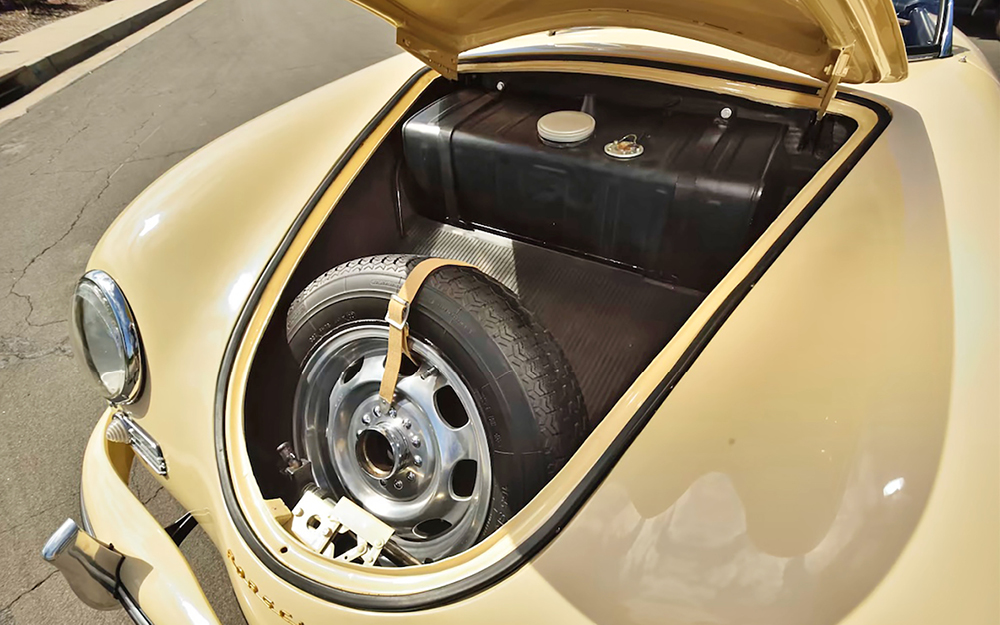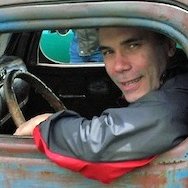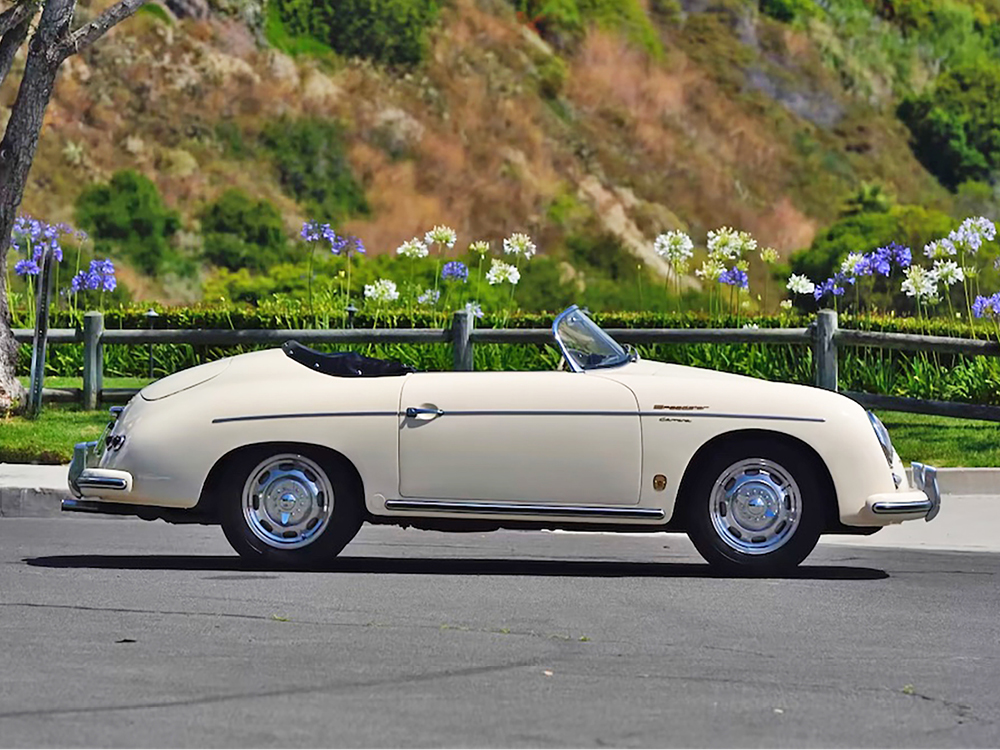The Speediest Speedster
In the collector-car realm, a difference of engines in the same model can trigger a huge disparity on the auction block, and we will see that effect at the Monterey Car Week auctions this month, across the automotive spectrum. Two the auction’s “Main Attraction” cars illustrate this point with an example that Porsche buffs know well.
Mecum will offer two 1956 Porsche 356A Speedsters at its auction, both in similar restored condition and both being offered from the same private collection after more than 30 years. The red Speedster has a pre-sale estimate of $300K-$350K, while a cream color Speedster has a considerably higher estimate – by up to $1M!
Why? The cream-color Speedster is a Carrera model, meaning it is one of 151 Porsche 356A models made with the super-rare “Fuhrman” four-cam engine. This was the first Porsche road car capable of reaching 120 mph, a milestone for the then-young sports car maker.
Let’s have a look at this million-dollar Speedster.
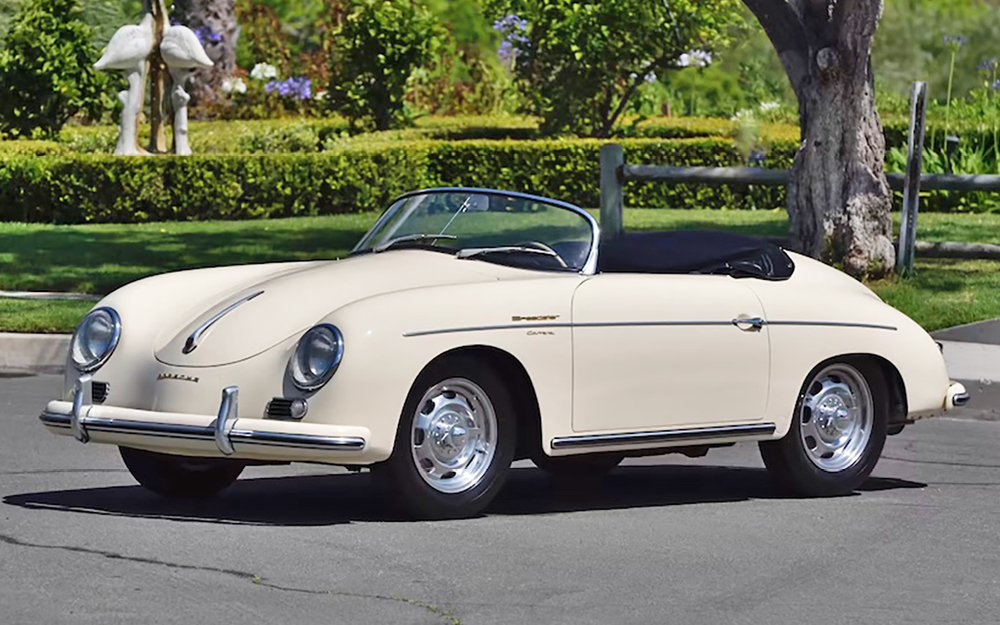
A Cheaper, Faster Bathtub
The lightweight bathtub-shaped Porsche 356 could be a joy to drive, but it was pricey when new and, honestly, a little pokey compared to some of the period’s other sports cars. That combination was holding the little Porsche back from its full market potential in America, an argument that the company’s U.S. importer, Max Hoffman, made with his friends in Stuttgart. Hoffmann suggested the idea of building a stripped-down open model to compete with the British sports cars of the day.
One such car in Hoffman’s sights was the new-for-1953 Triumph TR2, which cost about $2,500 when a 356 Cabriolet was $3,500. (That’s like $40,000 vs. $28,000 today.) Making the comparison more striking was that the 90-horsepower, 100-mph Triumph could leave a 55-hp Porsche 356 in the dust.
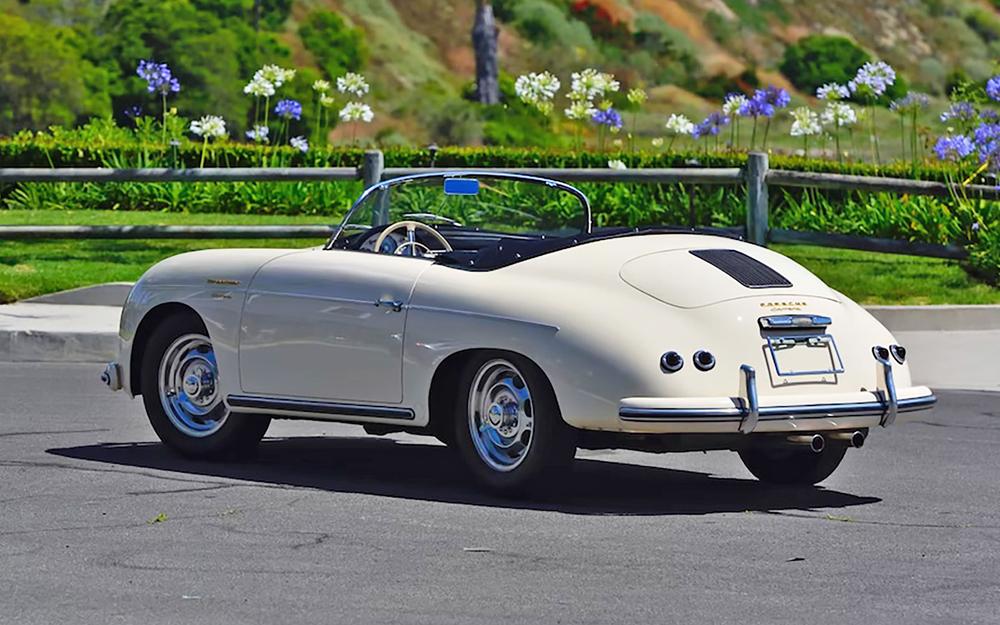
356 Speedster: The Accidental Legend
Hoffman got his wish from Porsche: a new, stripped-down model added to the 356 line and appropriately called “Speedster.” (An earlier attempt at such a car, called the “America,” proved to be too expensive thanks to its coachbuilt aluminum body.)
Porsche’s body maker, Reutter, based the new model on the 356 Cabriolet body, minus most of its comforts. A simple canvas top replaced the padded convertible top and roll-up windows. A unique windshield that was 3.5 inches lower than the 356 Cabriolet’s version gave the Speedster a racier look.
The Speedster’s bare-bones interior featured non-reclining bucket seats and simple door panels. The advertised base price was $2,995. The tachometer, heater, and side curtains came in an option package for $81, but these were considered “mandatory” options. The stripped-down Speedster was about 200 pounds lighter than an optioned-up Cabriolet, making it the best choice among 356 models for SCCA racing.
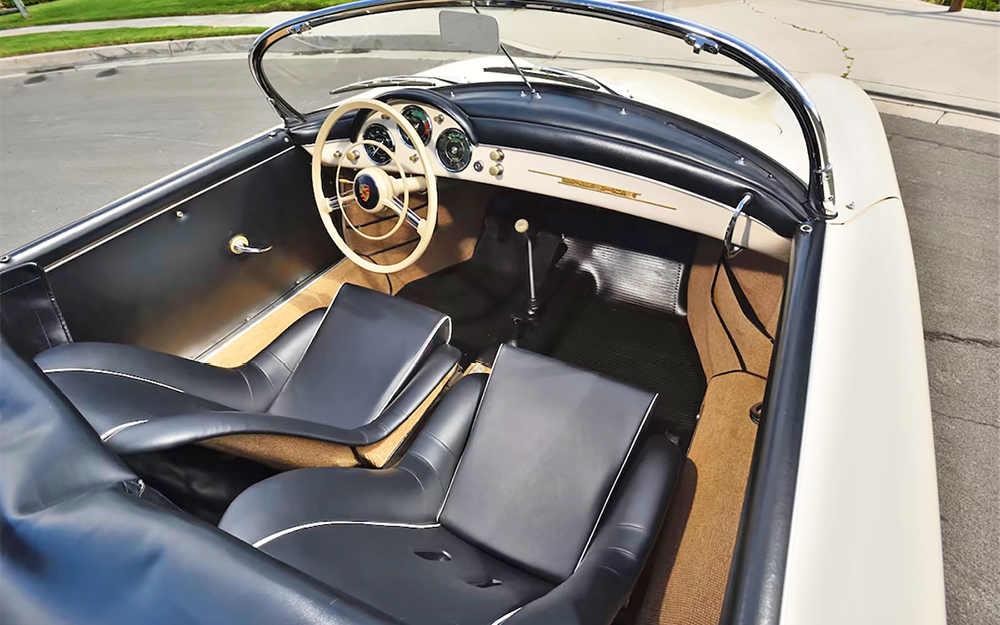
Earning Its Name
The Speedster’s engine choices mirrored those of the other 356 models, but that meant choosing the 70-horsepower Super version of the 1.5-liter air-cooled flat-four engine added $400. A Speedster with this engine, though, was a closer competitor to the Triumph. Porsche sold just 200 Speedsters in 1954, and production zoomed upward from there, with about 4,500 made in total through 1958.
The Speedster followed the other 356 models in their evolution to the 356A model spec in 1956 with 1.6-liter engines, a curved one-piece windshield and numerous other upgrades. Those willing to spend nearly $4,000 could get a Speedster with much more speed, thanks to a new engine option available across the 356 line, identified as “GS1500.” The letters stood for “Grand Sport,” and the “1500” signified the new Type 547/1 1.5-liter engine, a slightly tamer version of the engine used in the Porsche 550 Spyder racers.
This was the “Fuhrmann engine,” nicknamed for its development by Porsche engineer Ernst Fuhrmann. Its defining trait was the dual overhead camshaft (DOHC) configuration that replaced the Volkswagen-derived pushrod valvetrain of all other 356 models. It was a complex setup, driving the cams via vertical shafts driven by bevel gears off the crankshaft.
The crankshaft itself was, at first, a special (and expensive) roller-bearing design for higher engine revs. The engine also used dry-sump oiling system and dual ignition, with a pair of distributors. The bottom line for the Carrera-powered road cars was 100 hp (DIN), which was about 115 hp SAE gross using the measurement standard more familiar to Americans. Improvements and options over the years increased output.
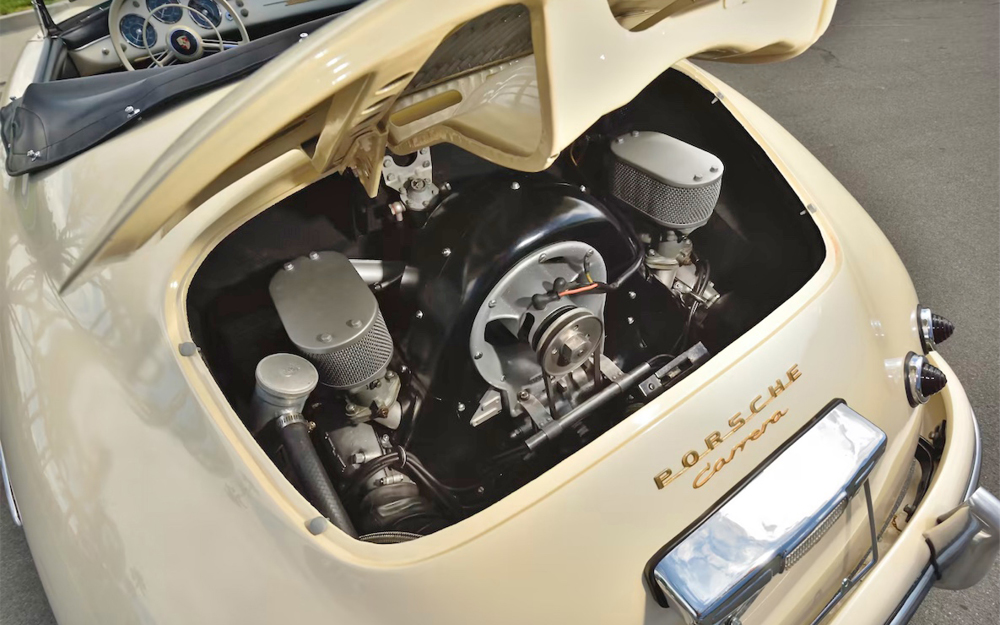
The First Carrera
Porsche 356 models equipped with this engine, including the Speedster, wore gold “Carrera” badges, an homage to how well the 550 Spyders did in Mexico’s La Carrera Panamericana road race in 1953, 1954, and 1955. High initial cost, and high maintenance costs, kept Carrera model sales low. (Rebuilding one of these complex engines is said to require a level of patience possessed by few humans.)
Just 151 Speedsters got the Carrera engine option. Later versions of the engine would power a number of different Porsche competition and road models into the early 1960s, including the 1964 Porsche 904 GTS.
The Carrera name, of course, would later migrate to the 911 family, where today the badge that denotes most 911 models.
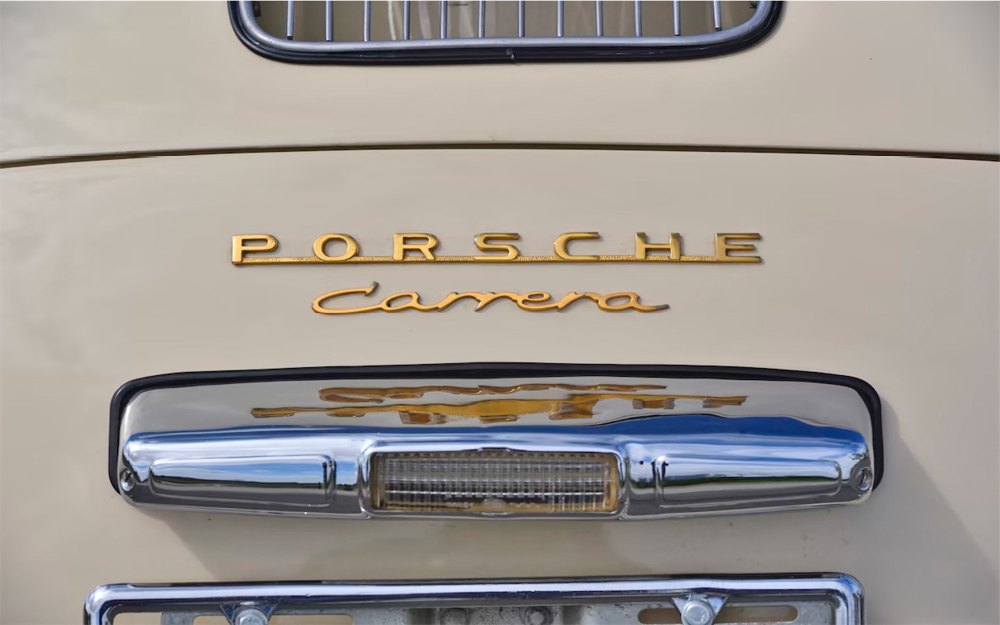
Potential Million-Dollar Baby
The 1956 Porsche 356 Speedster Carrera offered by Mecum in Monterey was delivered new in June 1956 to Hoffman Motors in New York. It was originally painted white with a black interior, but, like many 356 models over the years, acquired a color change, in this case to cream.
For younger members of our audience, a 100-horsepower 1.6-liter engine and 9-second 0-60 time might sound like the stuff of an entry-level economy car today. But this was the dawn of Porsche’s road-racing dynasty, and in a 356 Speedster, it made for one of the most desirable sports cars at the time, and a potential million-dollar baby today.
